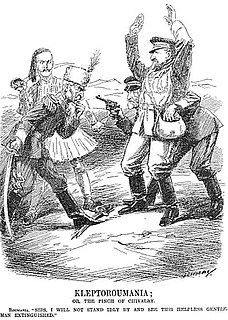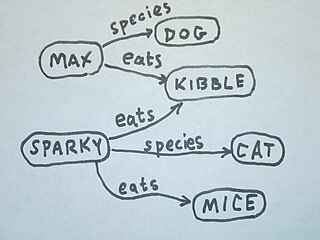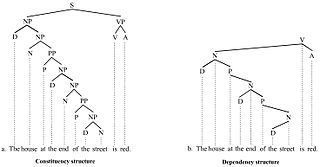 W
WAmbiguity is a type of meaning in which a phrase, statement or resolution is not explicitly defined, making several interpretations plausible. A common aspect of ambiguity is uncertainty. It is thus an attribute of any idea or statement whose intended meaning cannot be definitively resolved according to a rule or process with a finite number of steps.
 W
WAnalogical models are a method of representing a phenomenon of the world, often called the "target system" by another, more understandable or analysable system. They are also called dynamical analogies.
 W
WAnalogy is a cognitive process of transferring information or meaning from a particular subject to another, or a linguistic expression corresponding to such a process. In a narrower sense, analogy is an inference or an argument from one particular to another particular, as opposed to deduction, induction, and abduction, in which at least one of the premises, or the conclusion, is general rather than particular in nature. The term analogy can also refer to the relation between the source and the target themselves, which is often a similarity, as in the biological notion of analogy.
 W
WBabelfy is a software algorithm for the disambiguation of text written in any language. Specifically, Babelfy performs the tasks of multilingual Word Sense Disambiguation and Entity Linking. Babelfy is based on the BabelNet multilingual semantic network and performs disambiguation and entity linking in three steps:It associates with each vertex of the BabelNet semantic network, i.e., either concept or named entity, a semantic signature, that is, a set of related vertices. This is a preliminary step which needs to be performed only once, independently of the input text. Given an input text, it extracts all the linkable fragments from this text and, for each of them, lists the possible meanings according to the semantic network. It creates a graph-based semantic interpretation of the whole text by linking the candidate meanings of the extracted fragments using the previously-computed semantic signatures. It then extracts a dense subgraph of this representation and selects the best candidate meaning for each fragment.
 W
WThe Chinese word for "crisis" is, in Western popular culture, frequently but incorrectly said to be composed of two Chinese characters signifying "danger" and "opportunity". The second character is a component of the Chinese word for "opportunity", but has multiple meanings, and in isolation means something more like "change point". The mistaken etymology became a trope after it was used by John F. Kennedy in his presidential campaign speeches and is widely repeated in business, education, politics and the press in the United States.
 W
WConcepts are defined as ordinary ideas or general notions that occur in the mind, in speech, or in thought. They are understood to be the fundamental building blocks of the concept behind principles, thoughts and beliefs. They play an important role in all aspects of cognition. As such, concepts are studied by several disciplines, such as linguistics, psychology, and philosophy, and these disciplines are interested in the logical and psychological structure of concepts, and how they are put together to form thoughts and sentences. The study of concepts has served as an important flagship of an emerging interdisciplinary approach called cognitive science.
 W
WA definition is a statement of the meaning of a term. Definitions can be classified into two large categories, intensional definitions and extensional definitions. Another important category of definitions is the class of ostensive definitions, which convey the meaning of a term by pointing out examples. A term may have many different senses and multiple meanings, and thus require multiple definitions.
 W
WIn linguistics, deixis is the use of general words and phrases to refer to a specific time, place, or person in context, e.g., the words tomorrow, there, and they. Words are quite deictic if their semantic meaning is fixed but their denoted meaning varies depending on time and/or place. Words or phrases that require contextual information to be fully understood—for example, English pronouns—are deictic. Deixis is closely related to anaphora. Although this article deals primarily with deixis in spoken language, the concept is sometimes applied to written language, gestures, and communication media as well. In linguistic anthropology, deixis is treated as a particular subclass of the more general semiotic phenomenon of indexicality, a sign "pointing to" some aspect of its context of occurrence.
 W
WDiscourse is a generalization of the notion of a conversation to any form of communication. Discourse is a major topic in social theory, with work spanning fields such as sociology, anthropology, continental philosophy, and discourse analysis. Following pioneering work by Michel Foucault, these fields view discourse as a system of thought, knowledge, or communication that constructs our experience of the world. Since control of discourse amounts to control of how the world is perceived, social theory often studies discourse as a window into power. Within theoretical linguistics, discourse is understood more narrowly as linguistic information exchange and was one of the major motivations for the framework of dynamic semantics, in which expressions' denotations are equated with their ability to update a discourse context.
 W
WIn the formal sciences, the domain of discourse, also called the universe of discourse, universal set, or simply universe, is the set of entities over which certain variables of interest in some formal treatment may range.
 W
WPrototypical conditional sentences in English are those of the form "If X, then Y". The clause X is referred to as the antecedent, while the clause Y is called the consequent. A conditional is understood as expressing its consequent under the temporary hypothetical assumption of its antecedent.
 W
WExclusive or or exclusive disjunction is a logical operation that is true if and only if its arguments differ.
 W
WIn linguistics, grammatical relations are functional relationships between constituents in a clause. The standard examples of grammatical functions from traditional grammar are subject, direct object, and indirect object. In recent times, the syntactic functions, typified by the traditional categories of subject and object, have assumed an important role in linguistic theorizing, within a variety of approaches ranging from generative grammar to functional and cognitive theories. Many modern theories of grammar are likely to acknowledge numerous further types of grammatical relations. The role of grammatical relations in theories of grammar is greatest in dependency grammars, which tend to posit dozens of distinct grammatical relations. Every head-dependent dependency bears a grammatical function.
 W
WIdeophones are words that evoke an idea in sound, often a vivid impression of certain sensations or sensory perceptions, e.g. sound (onomatopoeia), movement, color, shape, or action. Ideophones are found in many of the world's languages, though they are claimed to be relatively uncommon in Western languages. In many languages, they are a major lexical class of the same order of magnitude as nouns and verbs: dictionaries of languages like Japanese, Korean, Xhosa and Zulu list thousands of them. The word class of ideophones is sometimes called phonosemantic to indicate that it is not a grammatical word class in the traditional sense of the word, but rather a lexical class based on the special relationship between form and meaning exhibited by ideophones. In the discipline of linguistics, ideophones have long been overlooked or treated as mysterious words, though a recent surge of interest in sound symbolism, iconicity and linguistic diversity has brought them renewed attention.
 W
WA Jabberwocky sentence is a type of sentence of interest in neurolinguistics. Jabberwocky sentences take their name from the language of Lewis Carroll's well-known poem "Jabberwocky". In the poem, Carroll uses correct English grammar and syntax, but many of the words are made up and merely suggest meaning. A Jabberwocky sentence is therefore a sentence which uses correct grammar and syntax but contains nonsense words, rendering it semantically meaningless.
 W
WThe Journal of Semantics is a leading international peer-reviewed journal of semantics of natural languages published by Oxford University Press. Its current editor is Rick Nouwen of Utrecht University. The journal is available online with subscription via Oxford Journals.
 W
WIn logic, mathematics and linguistics, And is the truth-functional operator of logical conjunction; the and of a set of operands is true if and only if all of its operands are true. The logical connective that represents this operator is typically written as or ⋅ .
 W
WIn logic, disjunction is a logical connective typically notated whose meaning either refines or corresponds to that of natural language expressions such as "or". In classical logic, it is given a truth functional semantics on which is true unless both and are false. Because this semantics allows a disjunctive formula to be true when both of its disjuncts are true, it is an inclusive interpretation of disjunction, in contrast with exclusive disjunction. Classical proof theoretical treatments are often given in terms of rules such as disjunction introduction and disjunction elimination. Disjunction has also been given numerous non-classical treatments, motivated by problems including Aristotle's sea battle argument, Heisenberg's uncertainty principle, as well the numerous mismatches between classical disjunction and its nearest equivalents in natural language.
 W
WThe material conditional is an operation commonly used in logic. When the conditional symbol is interpreted as material implication, a formula is true unless is true and is false. Material implication can also be characterized inferentially by modus ponens, modus tollens, conditional proof, and classical reductio ad absurdum.
 W
WMetonymy is a figure of speech in which a thing or concept is referred to by the name of something closely associated with that thing or concept.
 W
WModal logic is a collection of formal systems originally developed and still widely used to represent statements about necessity and possibility. The basic unary (1-place) modal operators are most often interpreted "□" for "Necessarily" and "◇" for "Possibly".
 W
WNatural Language Semantics is a quarterly peer-reviewed academic journal of semantics published by Springer Science+Business Media. It covers semantics and its interfaces in grammar, especially in syntax. The editors-in-chief are Irene Heim (MIT) and Angelika Kratzer.
 W
WIn analytic philosophy, philosophy of language investigates the nature of language, the relations between language, language users, and the world. Investigations may include inquiry into the nature of meaning, intentionality, reference, the constitution of sentences, concepts, learning, and thought.
 W
WThe pun, also known as paronomasia, is a form of word play that exploits multiple meanings of a term, or of similar-sounding words, for an intended humorous or rhetorical effect. These ambiguities can arise from the intentional use of homophonic, homographic, metonymic, or figurative language. A pun differs from a malapropism in that a malapropism is an incorrect variation on a correct expression, while a pun involves expressions with multiple interpretations. Puns may be regarded as in-jokes or idiomatic constructions, especially as their usage and meaning are usually specific to a particular language or its culture.
 W
WRAS syndrome is the use of one or more of the words that make up an acronym in conjunction with the abbreviated form. This means, in effect, repeating one or more words from the acronym. Three common examples are "PIN number" / "VIN number" and "ATM machine". The term RAS syndrome was coined in 2001 in a light-hearted column in New Scientist.
 W
WLinguistic reappropriation, reclamation, or resignification is the cultural process by which a group reclaims words or artifacts that were previously used in a way disparaging of that group. It is a specific form of a semantic change. Linguistic reclamation can have wider implications in the fields of discourse and has been described in terms of personal or sociopolitical empowerment.
 W
WA semantic lexicon is a digital dictionary of words labeled with semantic classes so associations can be drawn between words that have not previously been encountered. Semantic lexicons are built upon semantic networks, which represent the semantic relations between words. The difference between a semantic lexicon and a semantic network is that a semantic lexicon has definitions for each word, or a "gloss".
 W
WThe ultimate goal of semantic technology is to help machines understand data. To enable the encoding of semantics with the data, well-known technologies are RDF and OWL. These technologies formally represent the meaning involved in information. For example, ontology can describe concepts, relationships between things, and categories of things. These embedded semantics with the data offer significant advantages such as reasoning over data and dealing with heterogeneous data sources.
 W
WSemantic unification, in philosophy, linguistics, and computer science, is the process of unifying lexically different concept representations that are judged to have the same semantic content. In business processes, the conceptual semantic unification is defined as "the mapping of two expressions onto an expression in an exchange format which is equivalent to the given expression". Semantic unification has a long history in fields like philosophy and linguistics. It has been used in different research areas like grammar unification.
 W
WIn linguistics, sloppy identity is an interpretive property that is found with verb phrase ellipsis where the identity of the pronoun in an elided VP is not identical to the antecedent VP.
 W
WThe sorites paradox is a paradox that arises from vague predicates. A typical formulation involves a heap of sand, from which grains are individually removed. Under the assumption that removing a single grain does not turn a heap into a non-heap, the paradox is to consider what happens when the process is repeated enough times: is a single remaining grain still a heap? If not, when did it change from a heap to a non-heap?
 W
WIn linguistics, a treebank is a parsed text corpus that annotates syntactic or semantic sentence structure. The construction of parsed corpora in the early 1990s revolutionized computational linguistics, which benefitted from large-scale empirical data.
 W
WThe triangle of reference is a model of how linguistic symbols relate to the objects they represent. The triangle was published in The Meaning of Meaning (1923) by Charles Kay Ogden and I. A. Richards. While often referred to as the "Ogden/Richards triangle", the idea was also expressed in 1810 by Bernard Bolzano, in his Beiträge zu einer begründeteren Darstellung der Mathematik. The triangle can be traced back to 4th century BC, in Aristotle's Peri Hermeneias. The Triangle relates to the problem of universals, a philosophical debate which split ancient and medieval philosophers, especially realists and nominalists.